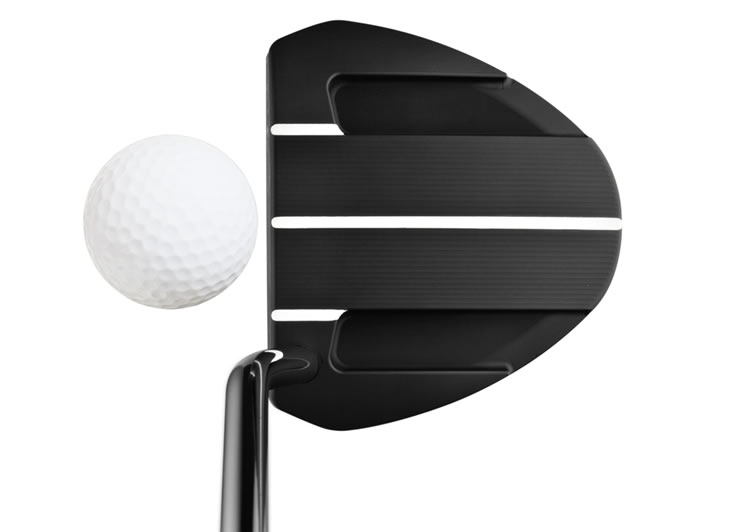Similar in design to the Ping Nome TR putter, launched last year, the Ping Ketsch putter features a high-MOI mallet shape, steel sole weight offering high levels of forgiveness.
So why Ketsch?
"Ketsch" is a small town in Germany, the home of Ping Germany Manager, Dieter Kartmann. As a tribute to him, Ping decided to name their latest putter design after his hometown.
Golfalot were one of the first to get an in-hand look at the new design.

As you can see, the stainless steel plate on the sole is positioned to pull the weight of the putter away from the face. When combined with a lighter, aluminium clubhead, the sole plate creates a high moment of interia, or MOI, which helps limit torque and twisting at impact.
Ping's Chairman & CEO, John A. Solheim said:
Our research shows that the head shape promotes extremely consistent alignment for the majority of golfers. Those factors, combined with our revolutionary variable-depth grooves and a high MOI, will help golfers putt more consistently.
Golfers will, without doubt, take note of the Ketsch look at address. Whilst the majority of Ping putters have a single alignment line, the Ketsch has three, constrasting white lines that together measure the width of a golf ball.
Interestingly, it is same idea as the alignment aid on Ping's i25 driver.

What really stands out about the Ketsch is the captured look it provides at address, inspiring confidence and promoting a consistent stroke, the key to holing more putts. It has three white, contrasting alignment aids extending from the top of the matte-black crown. The center line runs all the way to the back to make aiming easy.
Like many of their latest models, the Ping Ketsch is available in several different versions designed to suit a player's strokes and preferences. In fact, there are 12 different versions of the Ketsch.
Firstly, there are three different shaft bends. Ping believe, based on research of "hundreds of players and robot tests", that golfers are far more consistent when a putter is balanced to fit their stroke type. The three different shaft bends offer a slightly different performance based on whether a player's stroke is straight, or has a slight or strong arc.
For each shaft bend model there is the option of a standard or counterbalanced grip. The standard models feature a traditional Ping putter grip, whilst the counterbalanced models (RRP £200) feature a longer grip with weights inside the end of the putter. Some players will find the added weight near the top of the putter creates a fulcrum which will help promote a stable, pendulum stroke.
Further still, players can even adjust the length of their Ping Ketsch putter.

As well as a standard, 35-inch version, Ping are offering an telescoping-shaft, adjustable-length model (RRP £175 Standard, £224 Counterbalanced) that can be modified to any length between 31 and 38 inches.
Ping are keen to remind golfers to do any adjusting "before your round". Adjustments made during a round would, of course, breach R&A and USGA rules.

The Ketsch features Ping's latest version of its success True Roll (TR) technology. Ping's "True Roll" comes from variable-depth grooves that are milled directly into the face. The grooves are deepest at the centre of the face and get shallower towards the heel and toe.
Ping claim that when compared to a non-groove faced putters, TR models increased ball-speed consistency by nearly 50%, measured at nine different points across the face.